Euroval (Appraisal & Valuation Society)
The short read
Euroval, a large firm of estate valuators & surveyors was in need of a systems update (their CRM and its backend), as both design and technical debt were becoming untenable (slowing down every day operations and becoming a source of frustration for everyone).
We carried out a discovery phase with them. Through user research we:
- Learned about the problems different users had and their ways of co-existing with them
- Worked with them to innovate, find solutions and new opportunities for improved ways of working.
We then worked on a full renovation of the:
- Tech stack (breaking free from legacy systems).
- Interface (moving on from obsolete patterns that had been patched up over and over).
- Information architecture (optimising flows for different user types and levels of access).
- Graphic design (changing the look & feel throughout, creating a new UI library).
↓ Read the full story below.
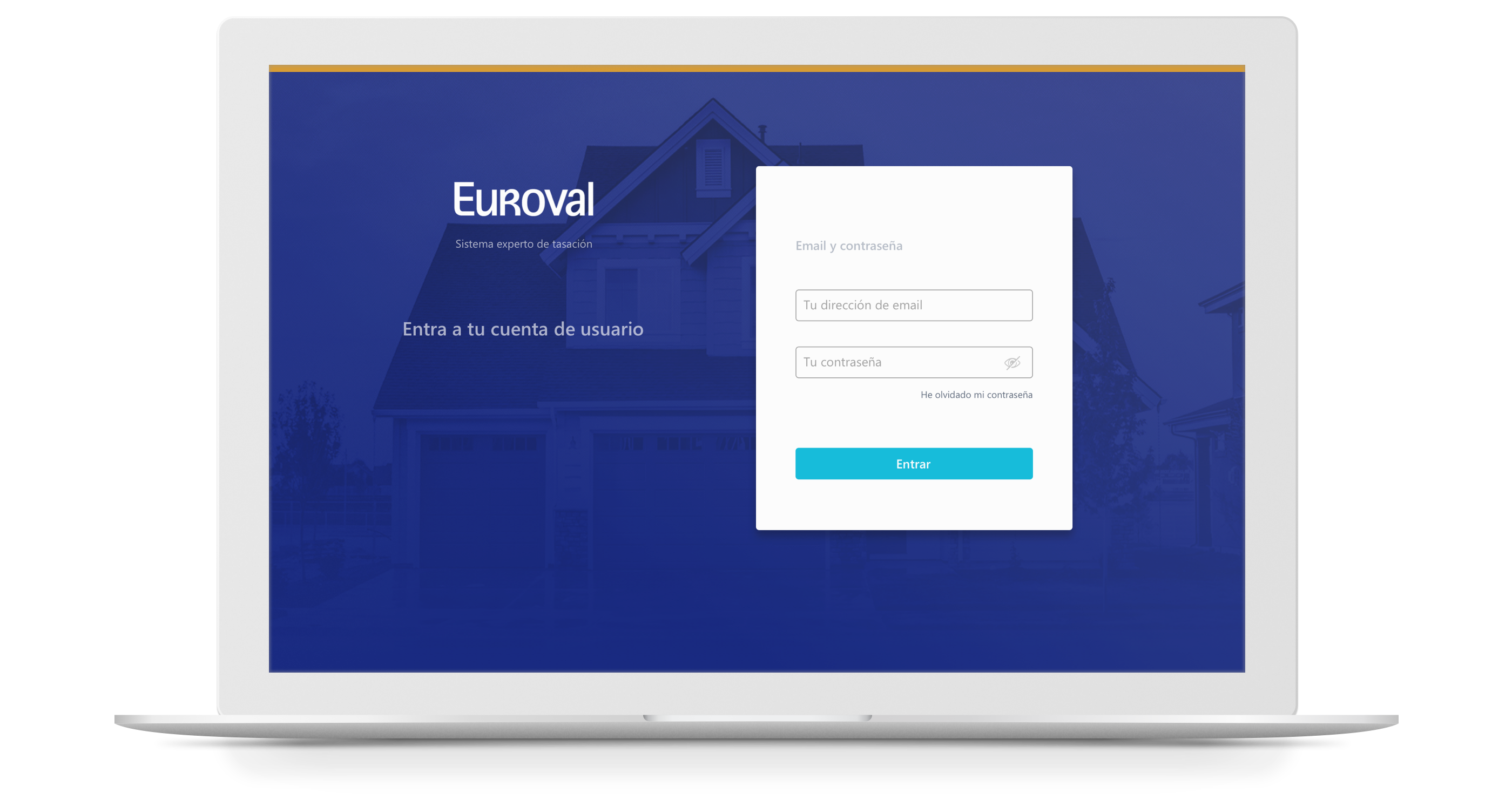
↑ New UI of the login screen
1. Context
Euroval is an international Real Estate Valuation company operating since 1990. Over time, services expanded to tax analysis, energy certifications and valuation of equity, inventories, patents, art & jewellery, etc.
Operations had far outgrown the capabilities of their systems, which had been increasingly patched up along the way, with no unified criteria.
Personnel had to cope with:
- Ever-increasing system blocks and long lags (and often the system would crash).
- Inability to cross-process data,leading to lenghty duplication (one system would not talk to the next)
- Learning a hard and counter-intuitive interface.
- Inability to sync up remotely (and valuators are out and about many hours a day).
This lack of efficiency was becoming a major resource drain, through time-consuming manual data entry & processing, a very steep learning curve, or overall frustration, among many others.
The system, an old school solution, had strong points back in the day, but could not cope any longer. It lived in the local servers only, making it very cumbersome to connect remotely (and securely) for staff on the road. Usability from mobile devices wasn't good either.
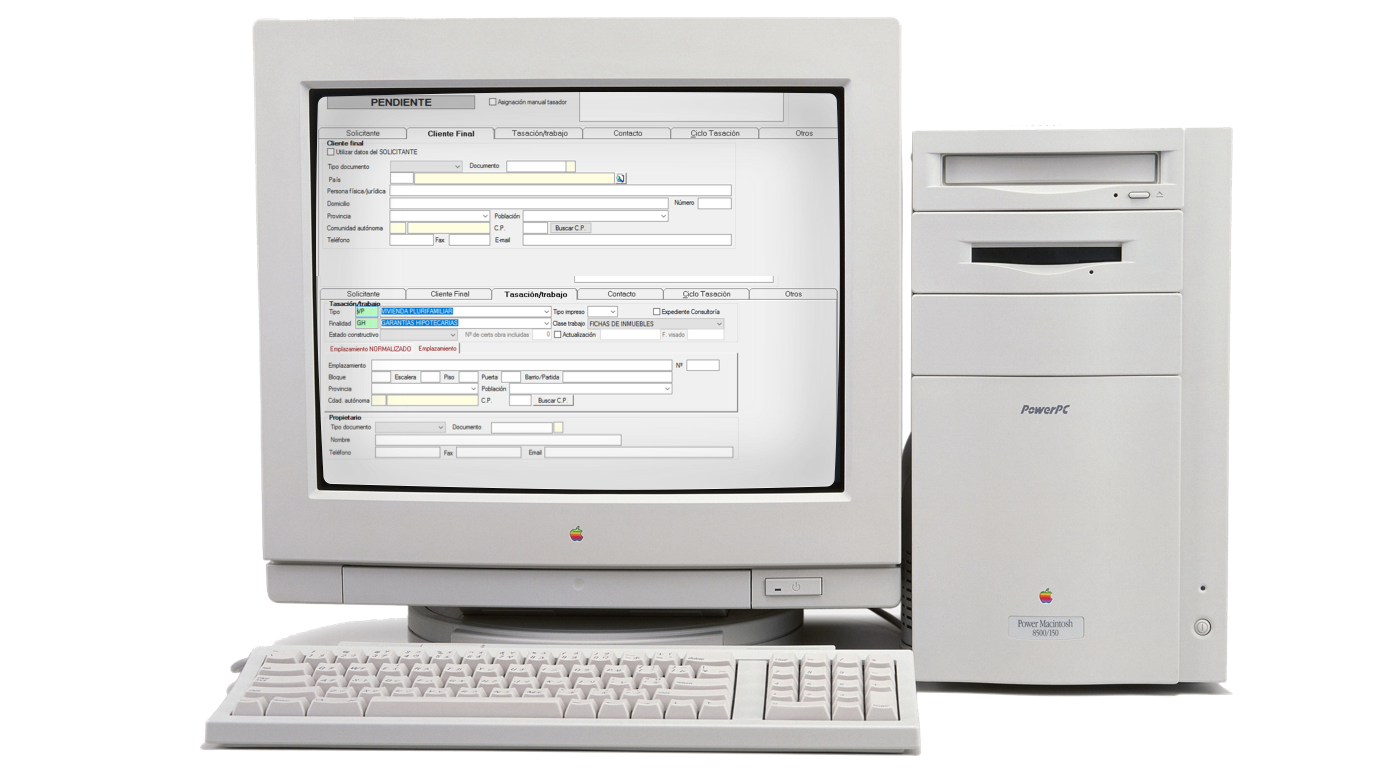
↑ The old CRM at Euroval
2. Discovery
After the first conversations we could see the project scope was massive: many use cases, end points, user types, levels of access, document types, etc. Plus, it needs full scalability to be future-proof.
To tackle such challenge, we used a Venture Design methodology, integrating design thinking within an Agile framework.
We started out analysing the structure of the business and its processes, as it was essential to get to know in detail the main workflows and scope of operations.
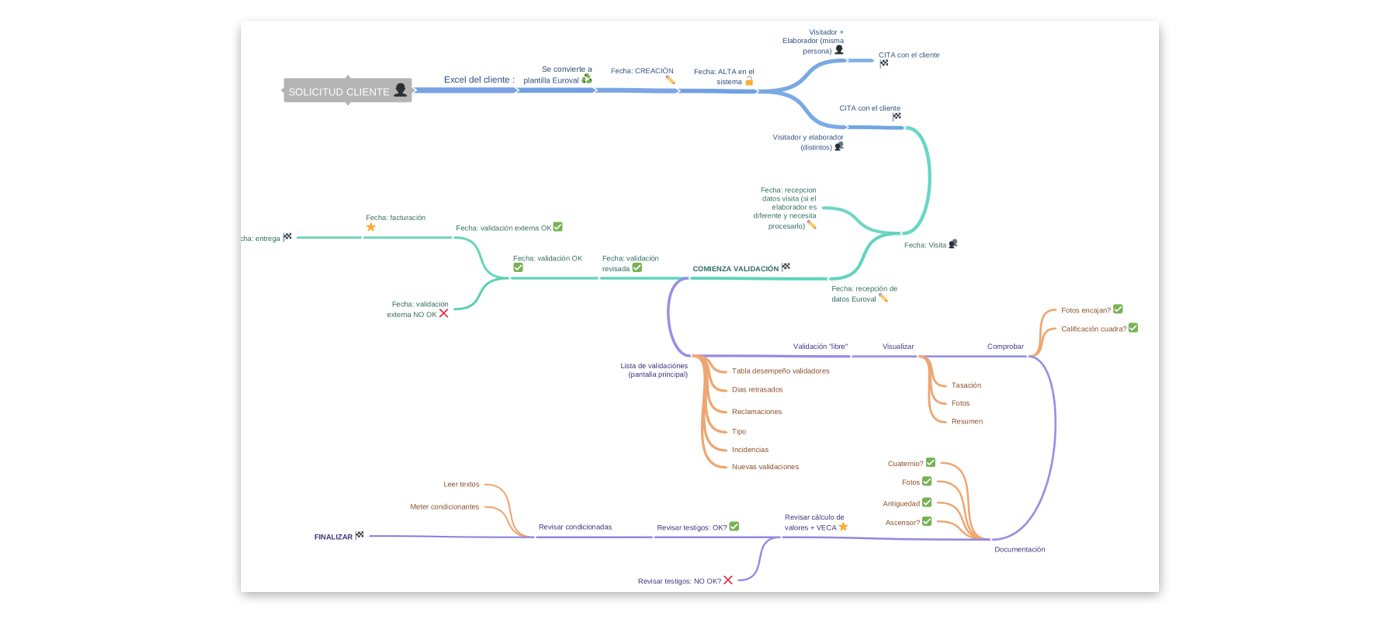
↑ Mapping the "as-is" flows: we needed to understand how each person operated.
3. User interviews
Then came a long series of interviews with the different members of staff interacting with the system at different levels and stages.
These conversations were, although loosely following our script, very open. It was critical to get to know the users, their highs & lows along with everything else about their work.
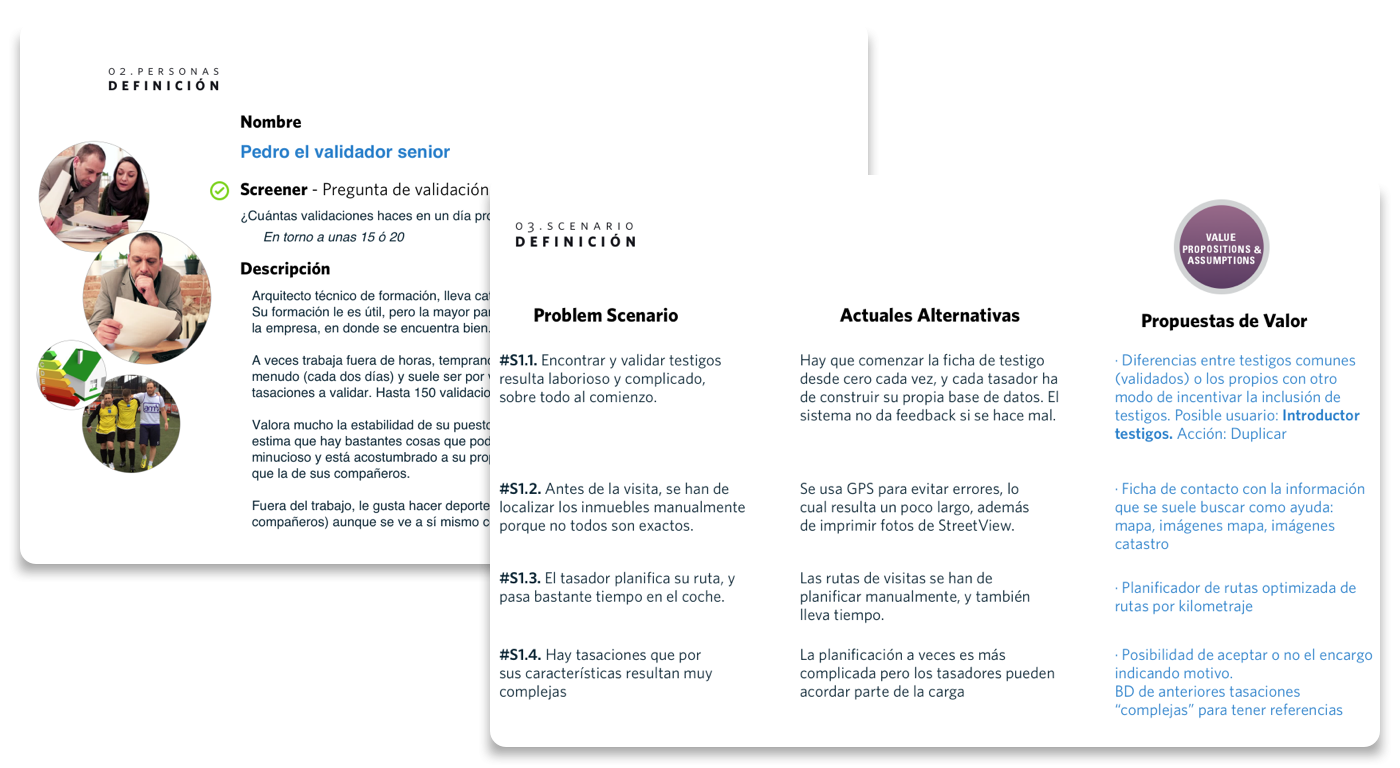
↑ User personas and structured information from our interviews.
4. Problem space
- We then filtered through all interview notes to distil all the problem scenarios we could, breaking bigger issues into smaller problems when possible.
- Matched each each of them to their current alternatives (workarounds).
- Looked at each of them to come up with possible solutions (the value proposals).
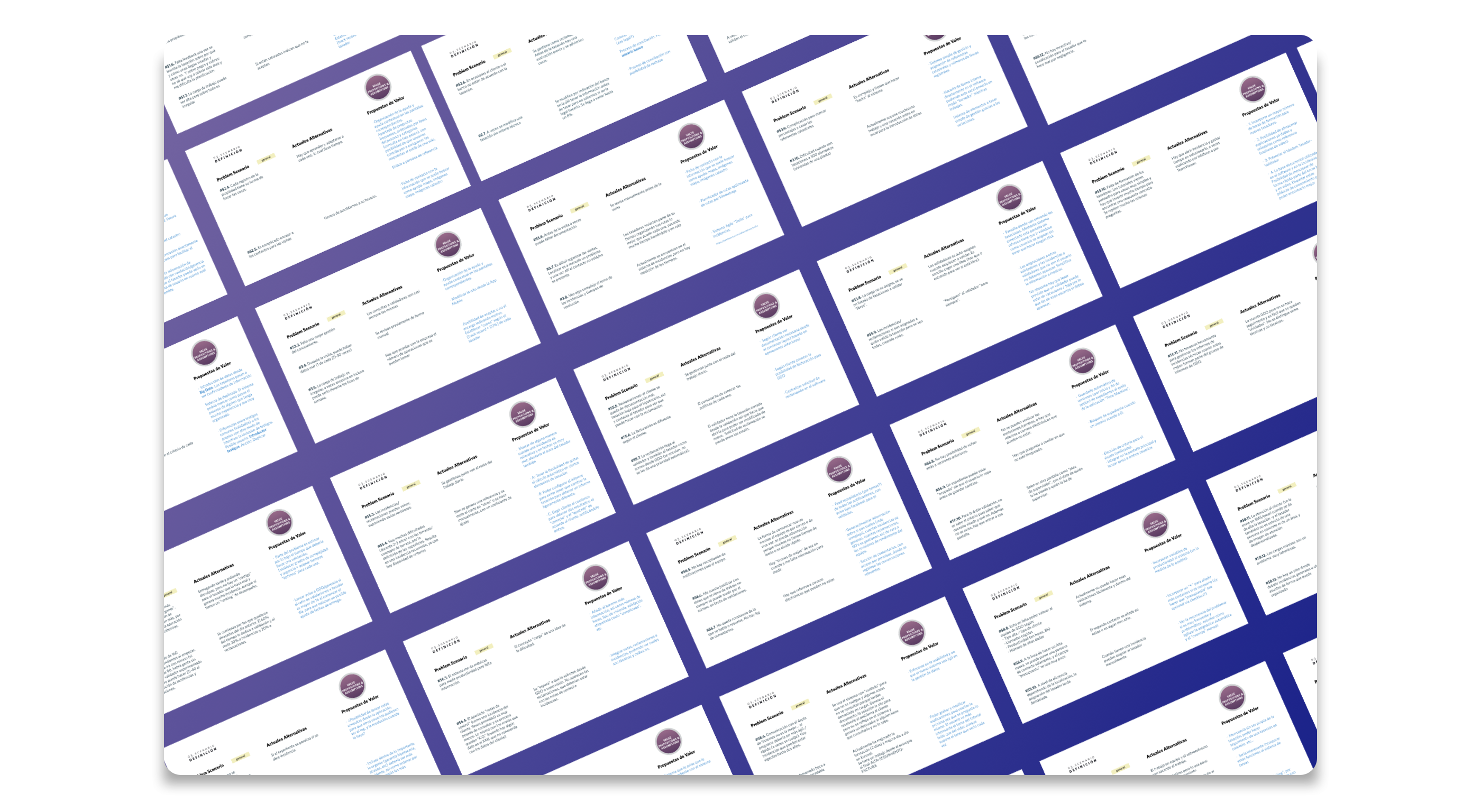
↑ This methodology made it easier to create a project structure out of the apparent chaos.
5. Use cases
This resulted in hundreds of Use Cases that we then mapped out by affinity and priority (streamlining where possible).
It provided the foundation to build a long list of Epics & User Stories.
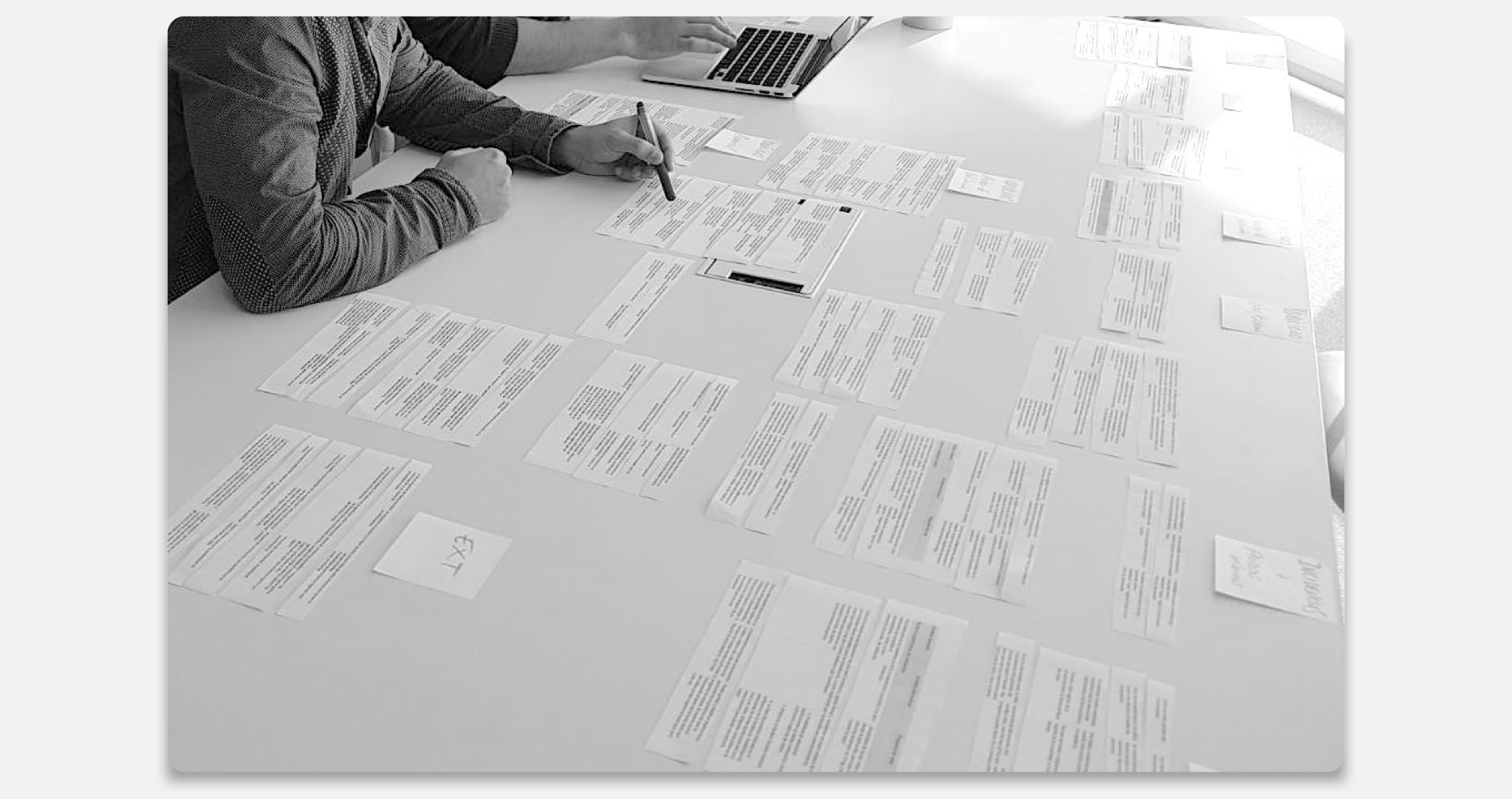
↑ Everything had to be categorised and evaluated.
6. Workflows
It was also critical to understand the details and ramifications of each workflow, this time in order to analyse and improve each step, finding opportunities for innovation with the client.
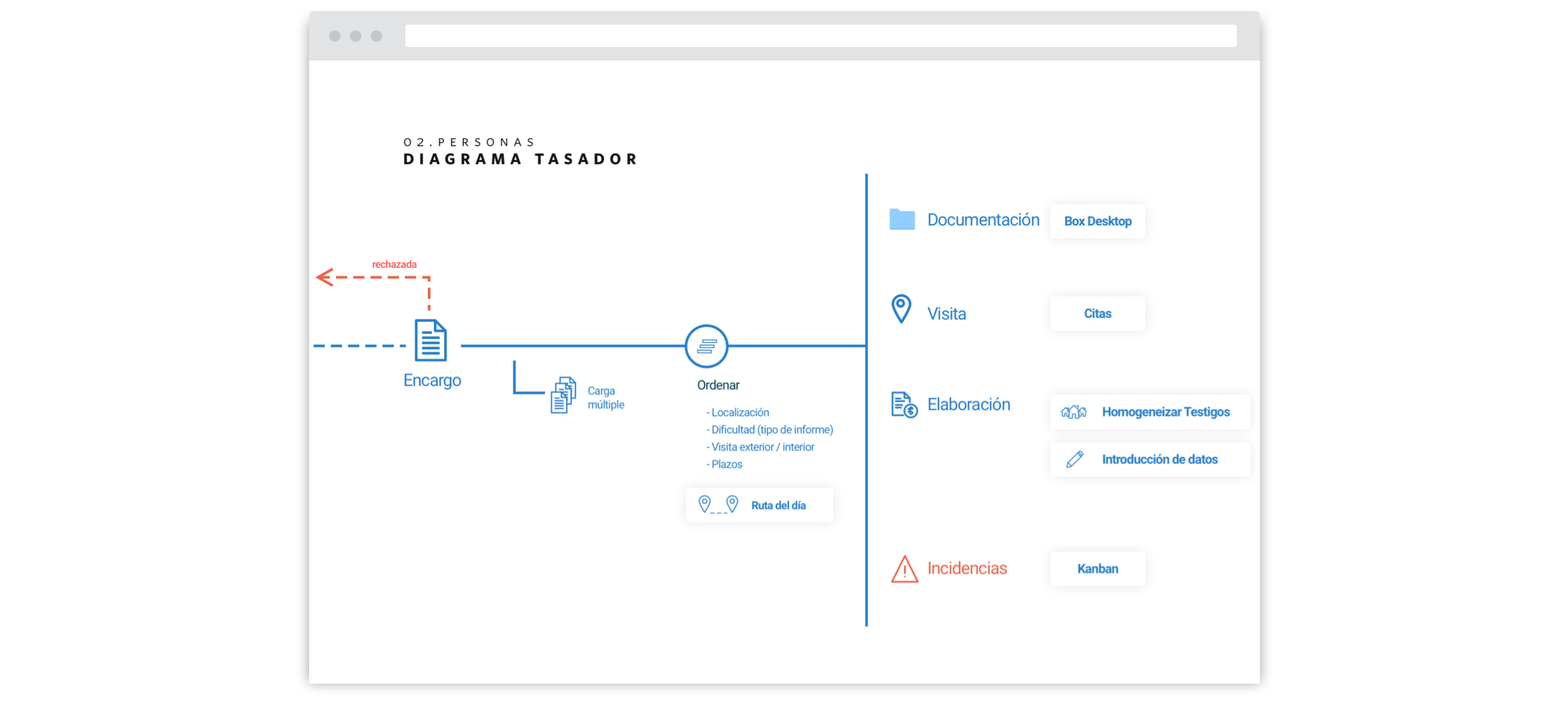
↑ Rethinking workflows to find opportunities to innovate and improve.
7. Prototyping
Only after the main parts had been clarified, higher fidelity prototyping could start. Through many iterations, these became increasingly detailed, providing a clearer vision of the future (prototypes by Elad Rodriguez).
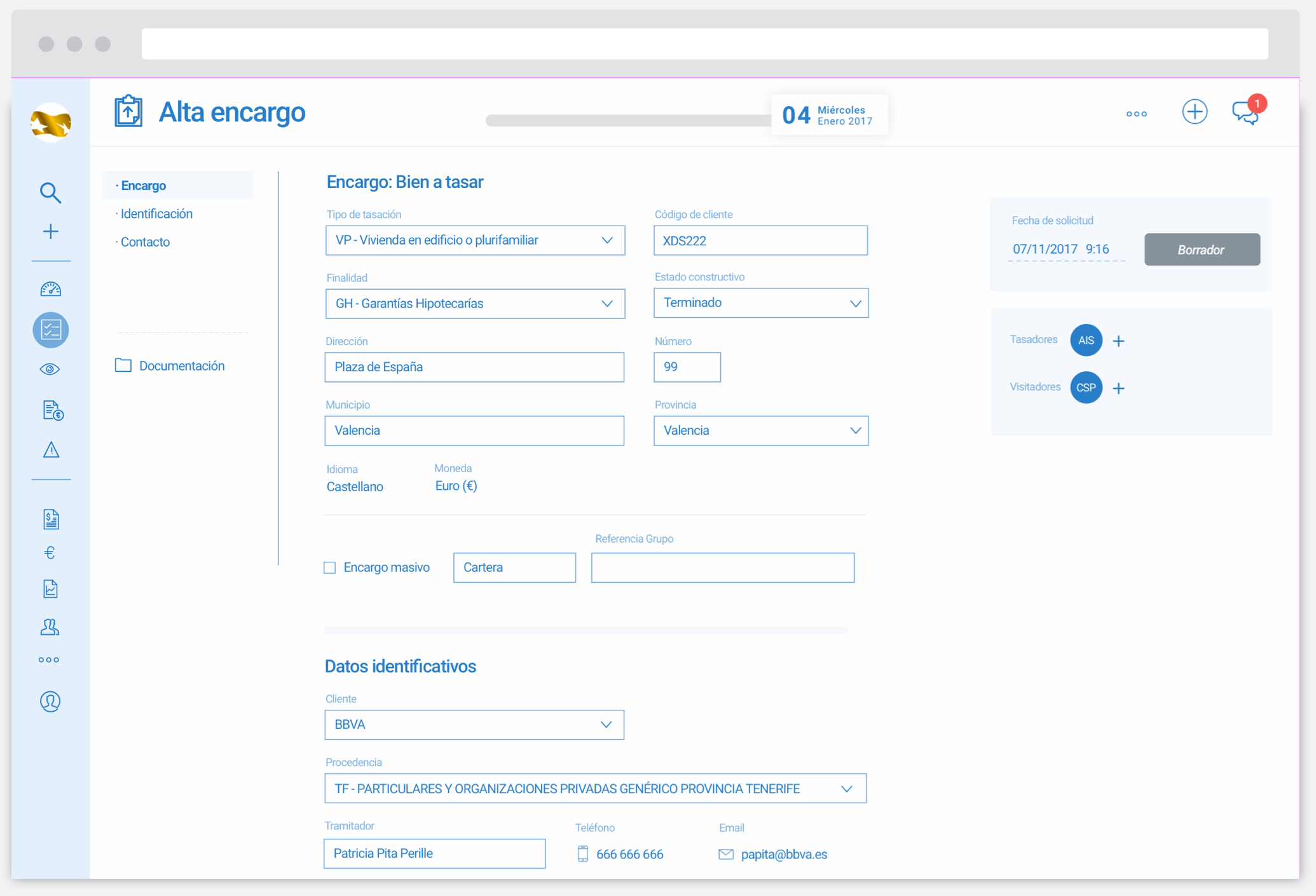
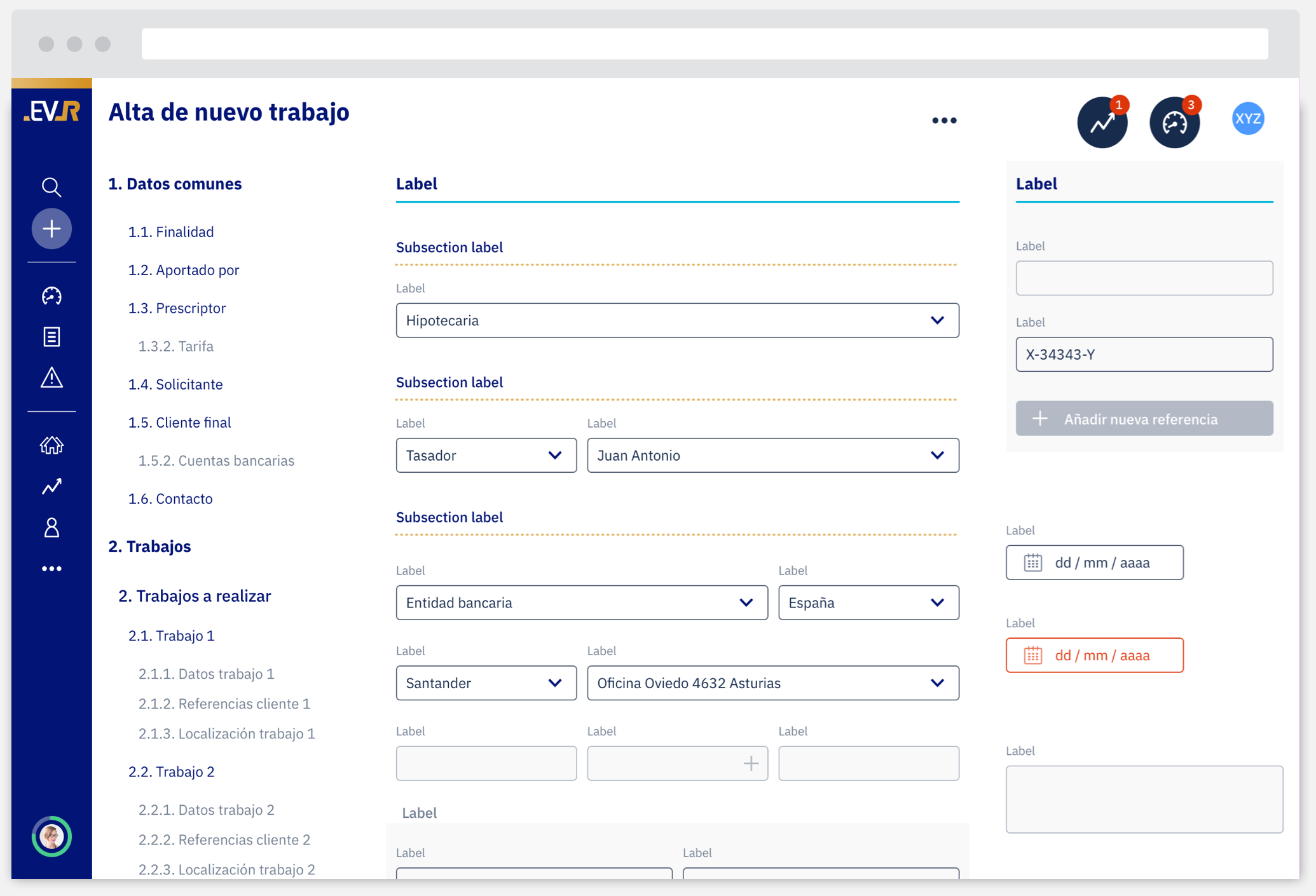
↑ Good prototyping guided UI work.
8. Interface
It was then time to start dressing our ideas in proper clothes, starting with some basic elements, such as spacings, grids, etc. for example:
- Typography: IBM Plex Sans was picked as a very screen-readable, versatile and modern typeface.
- The colour palette: was based on a percentage scale, being very intuitive for Developers (as in Blue-100, 90, 80...).
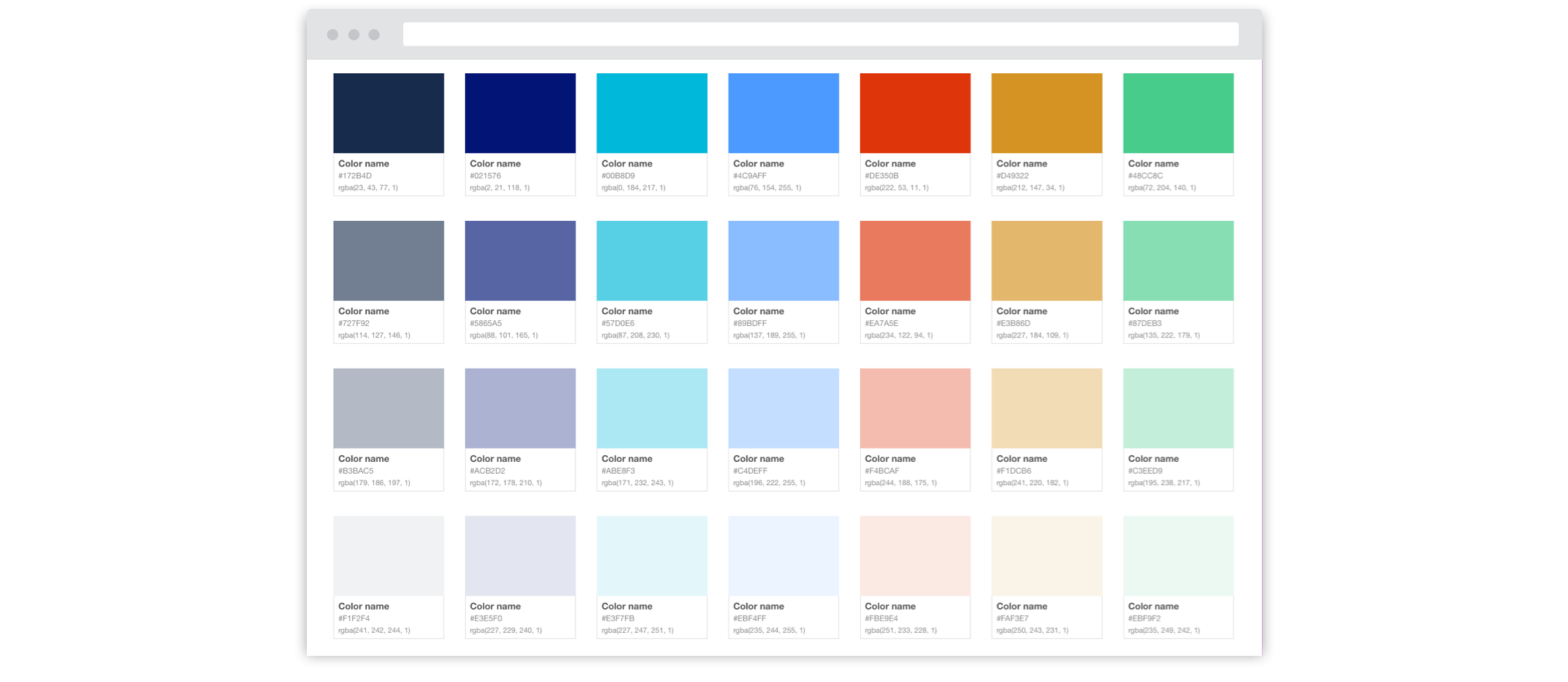
↑ A versatile colour palette.
9. Atomic design
We built a comprehensive design system (from its very atoms & molecules) to style the base library components being coded by the Development team.
All elements had to be created, so bigger modules could be cooked from to their simplest ingredients.
One of the most rewarding side effects of building a Design System from the ground up was gaining a deeper understanding of their parts and how they need to work.
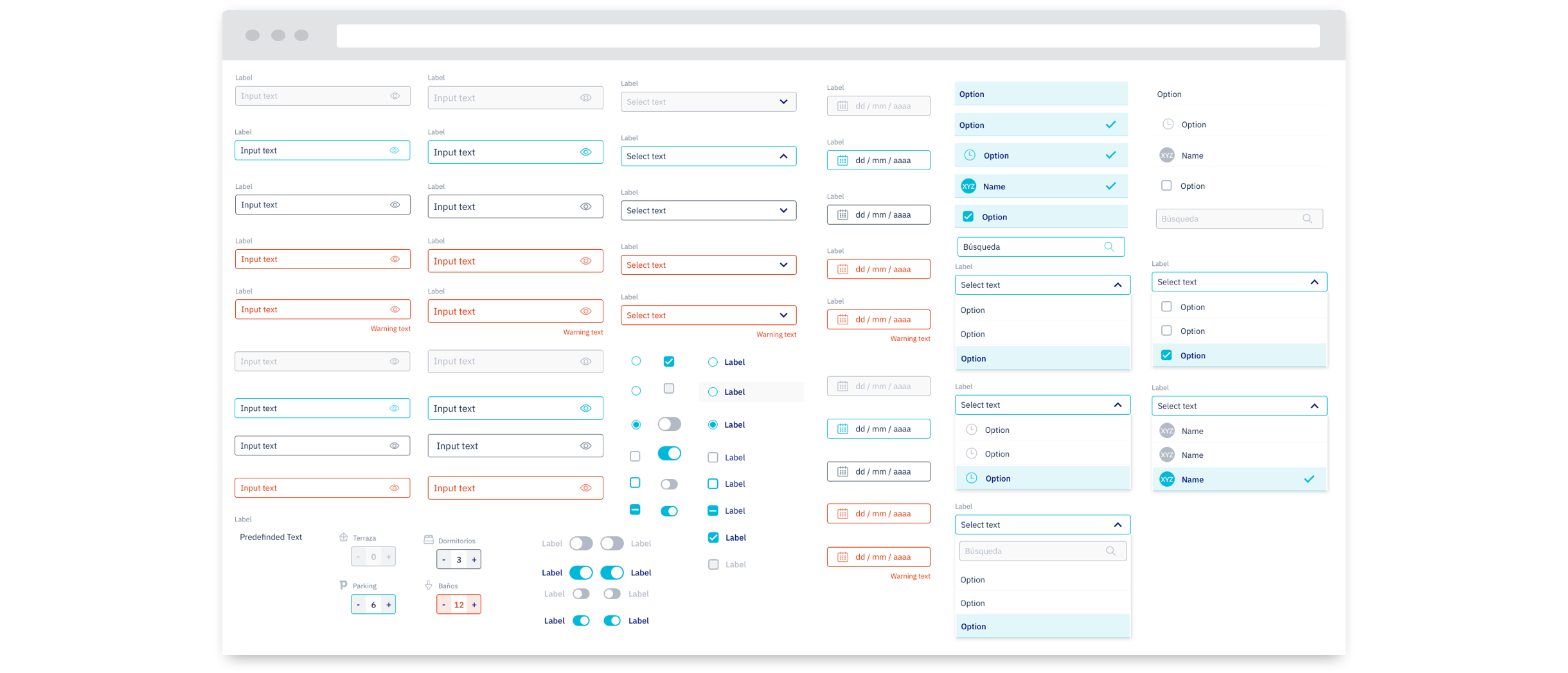
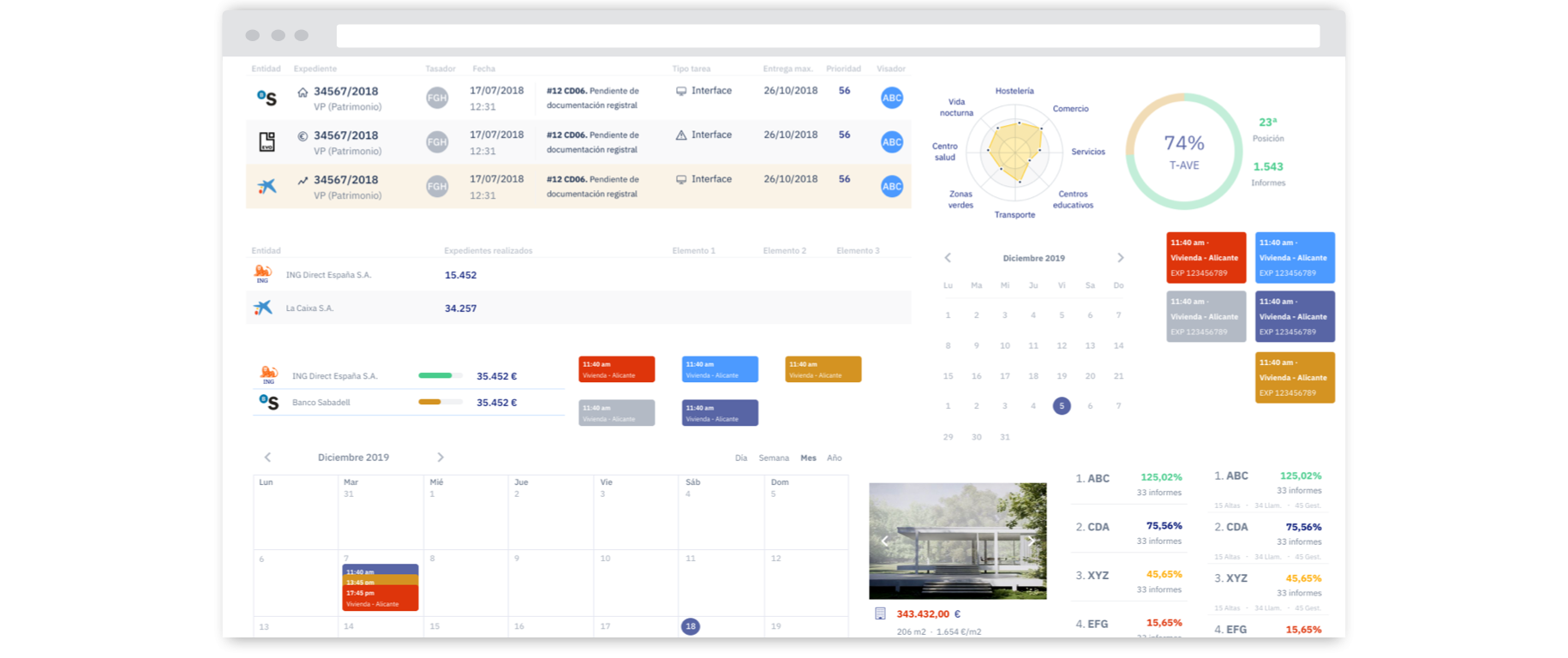
↑ First atoms, then molecules... then organisms.
9. Atomic design
It took some time and it was a fun experience, but the list of components kept growing and I was barely able to keep up…
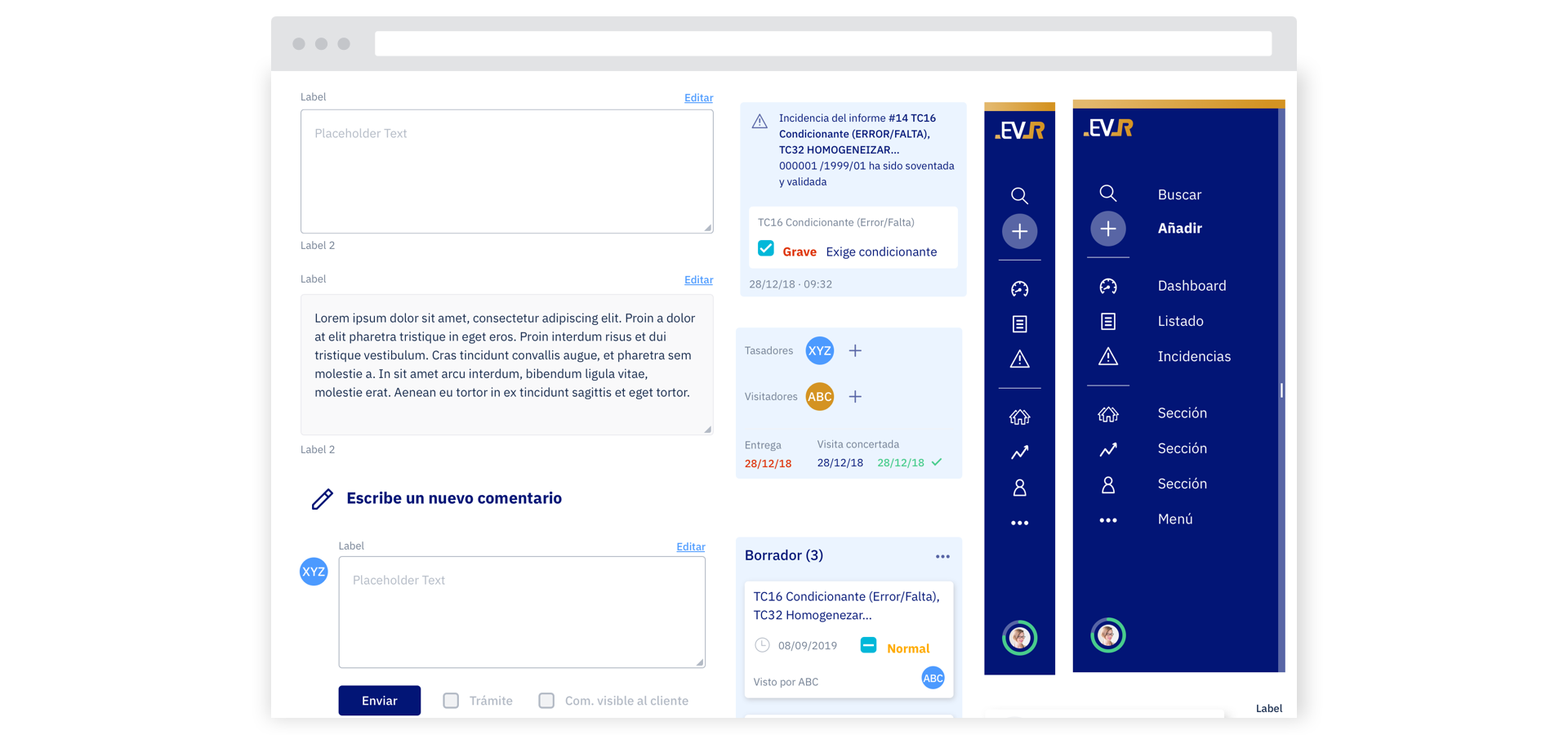
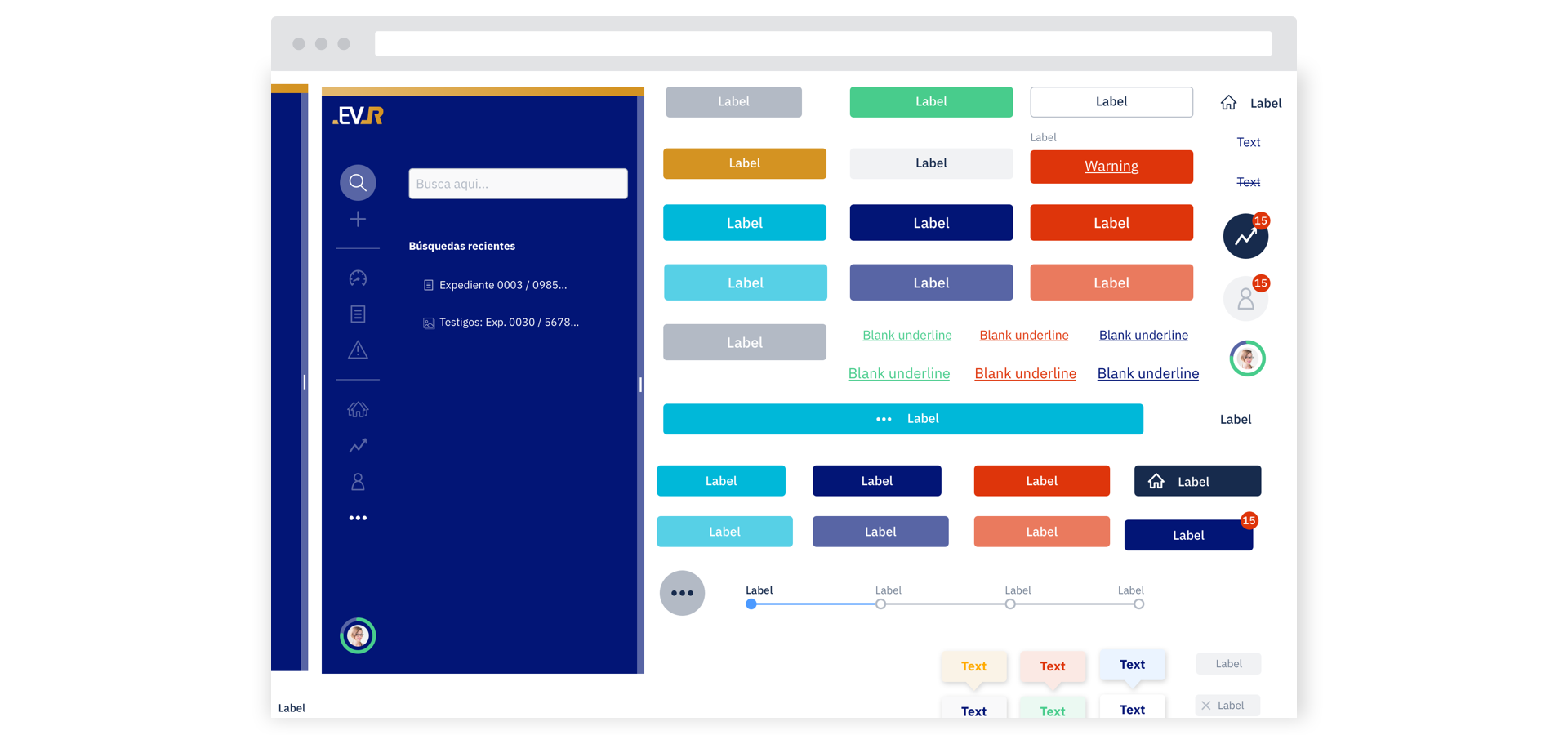
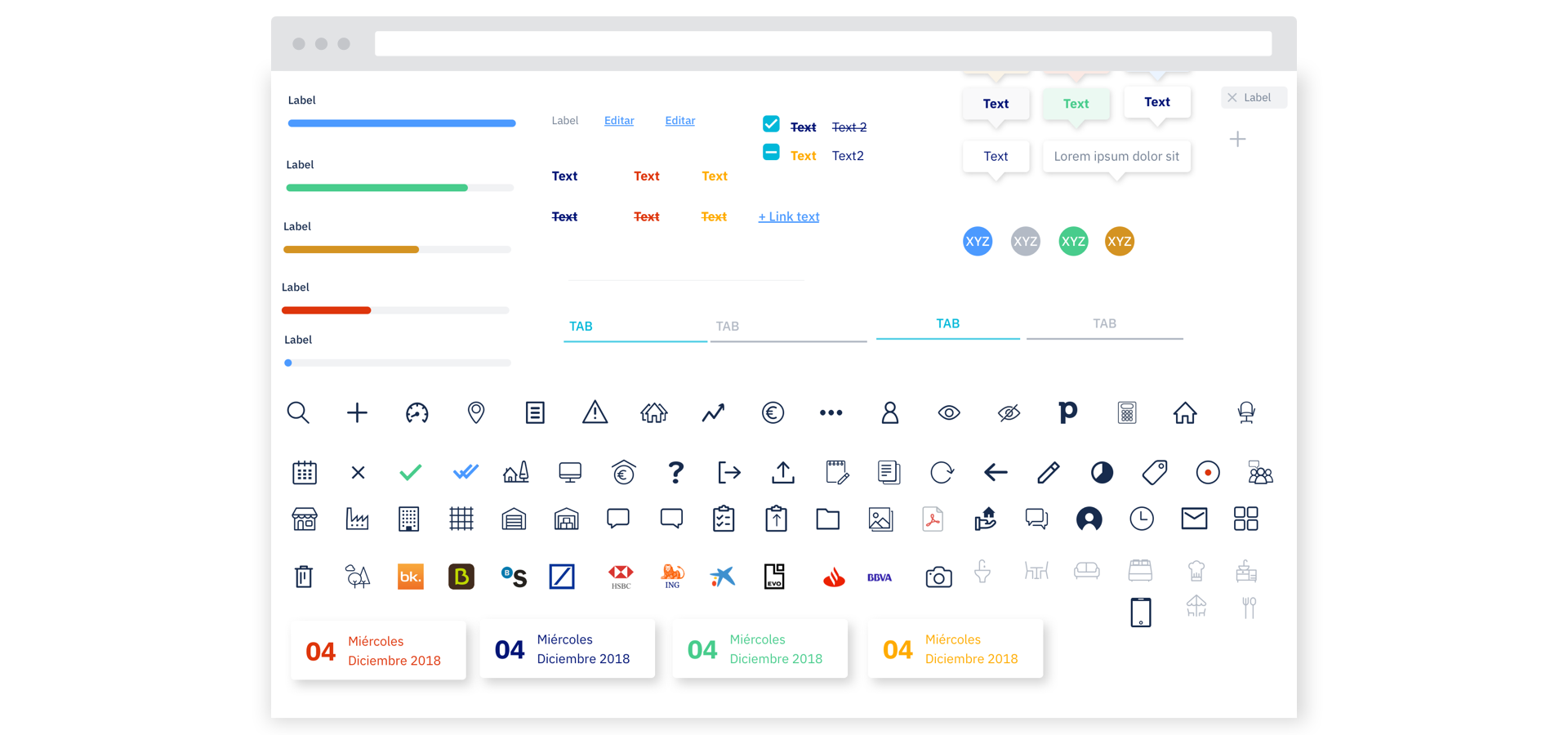
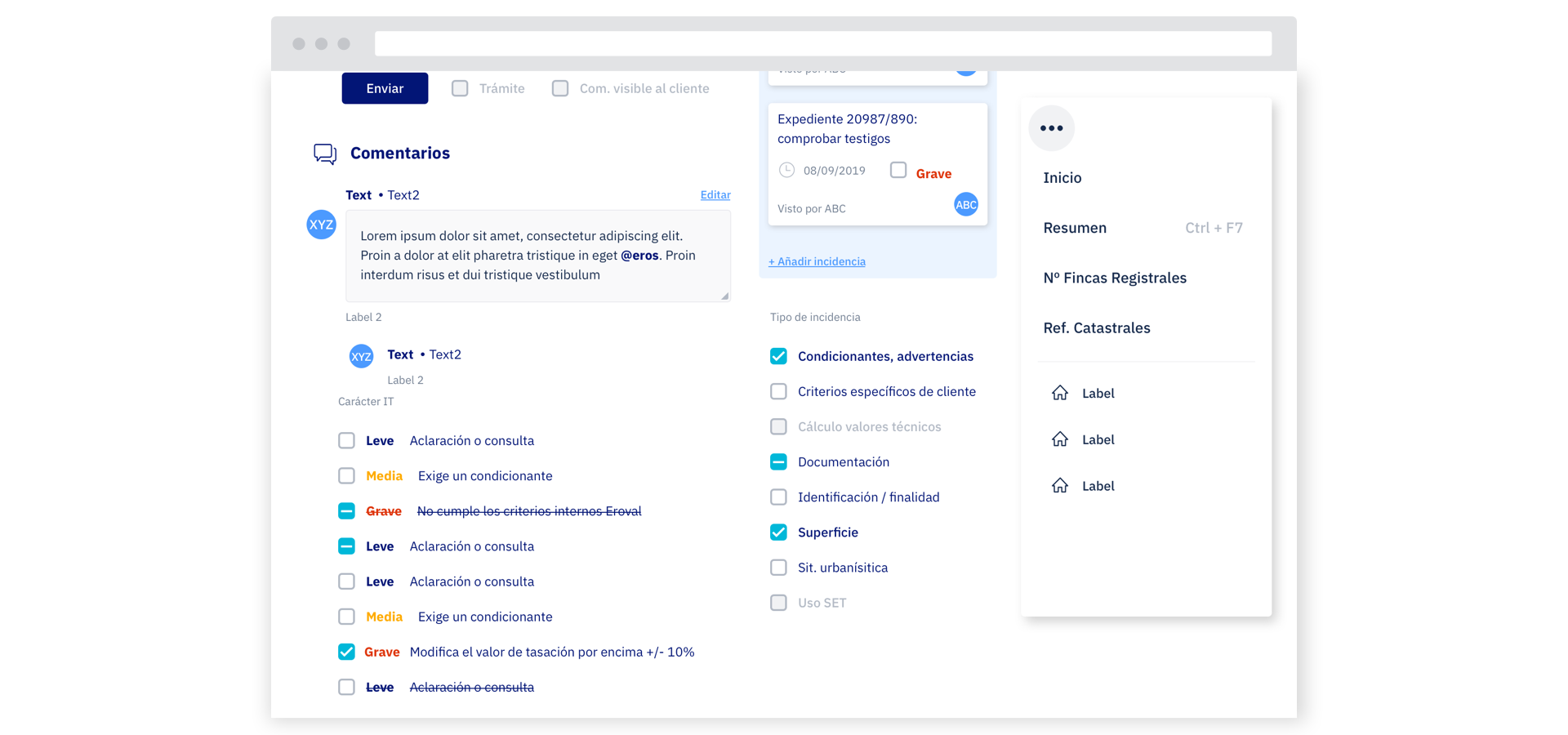
↑ A wide range of tables, charts, calendars, etc.
10. High fidelity
At the initial stage, full screens also needed to be composed for client validation and internal evaluation within the Development team.
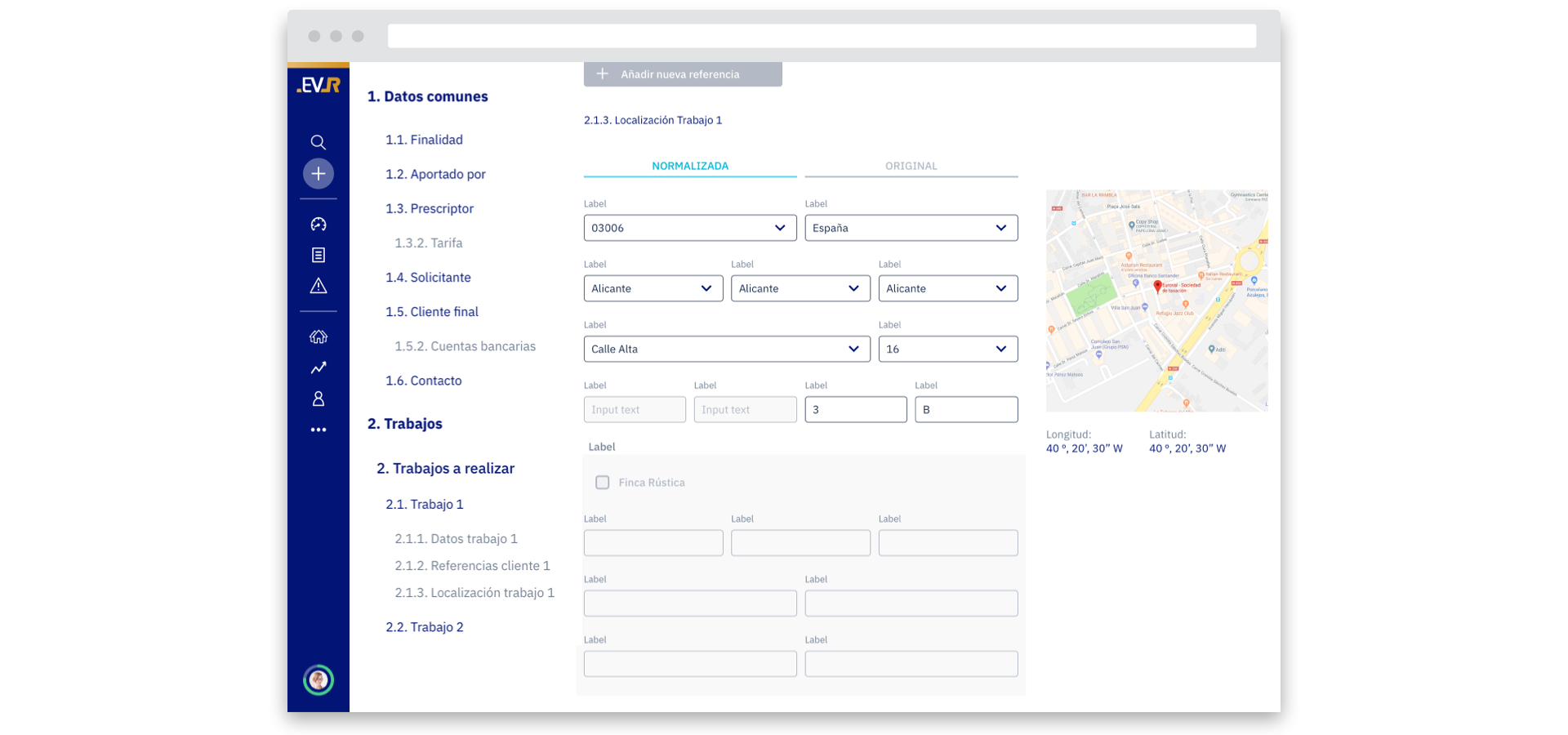
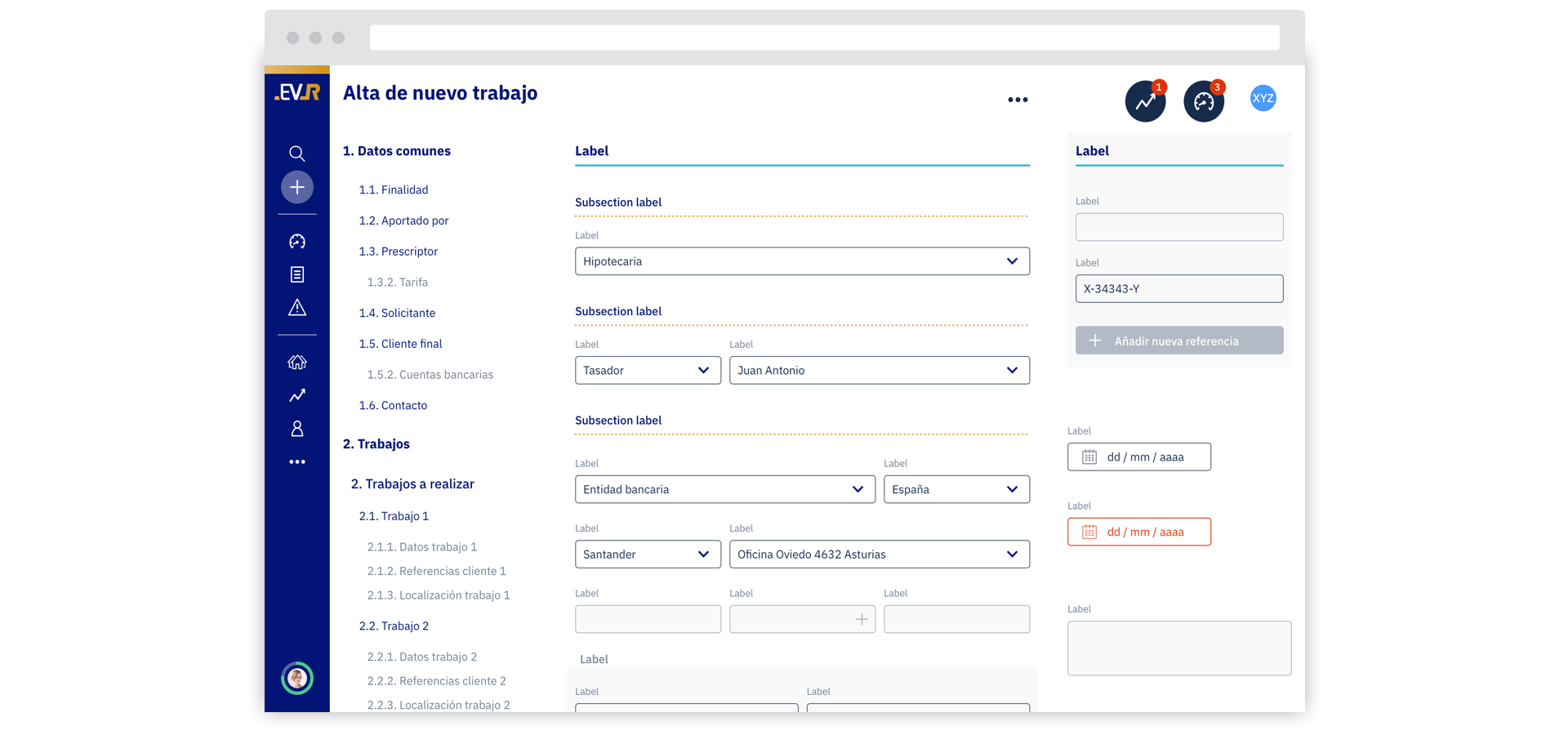
↑ A wide range of tables, charts, calendars, etc.
11. Outcomes
A versatile, future-proof solution that is a great deal more effective at all levels (project only available for internal client use).
Euroval has made a massive leap in terms of:
- Efficiency and agility
- Learnability and communication
- Error prevention
- Ability to monitor operations
- Ability to scale and update
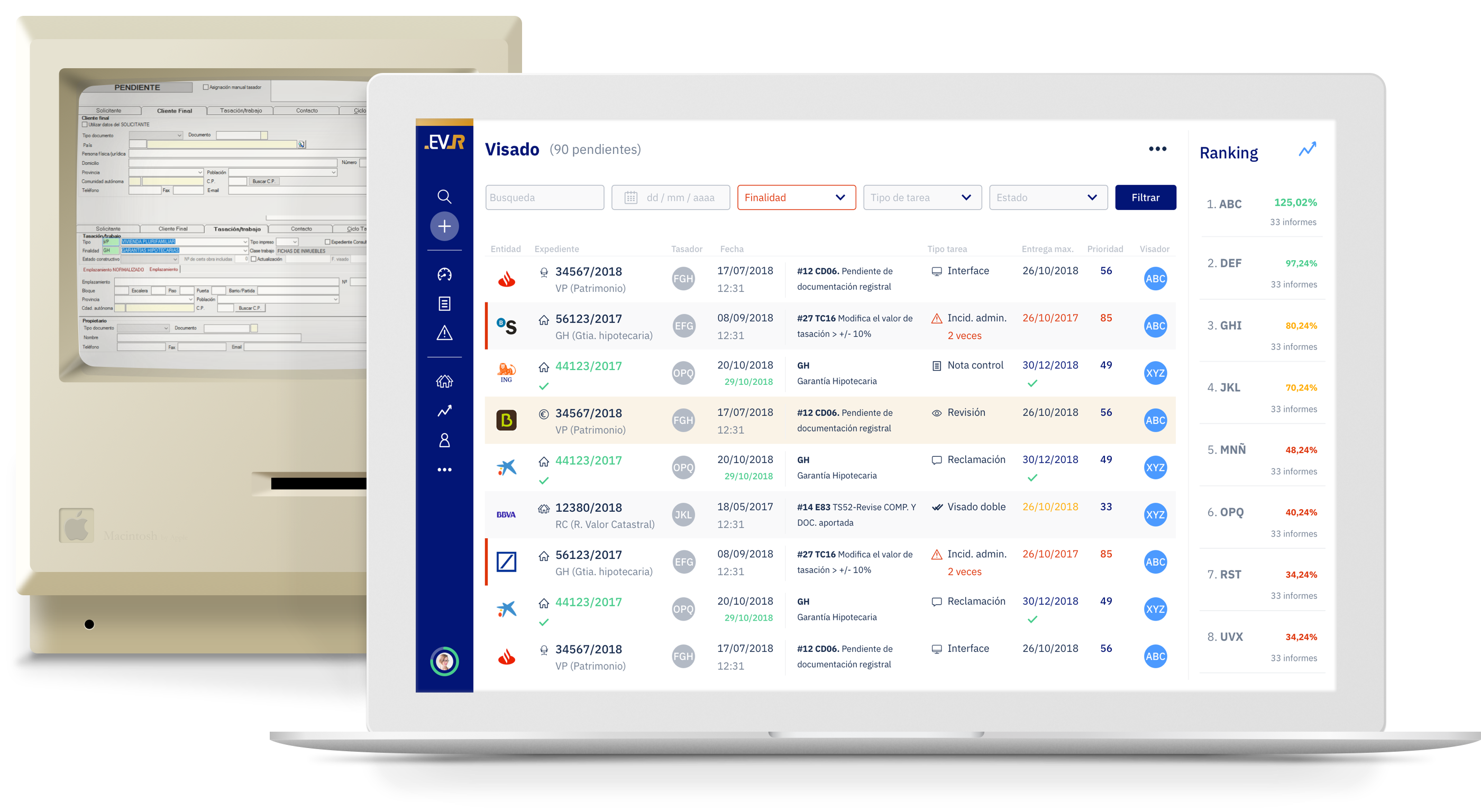
↑ A clean and intuitive new interface.
My role
- User research,
- Design of new interface and component library.
The team
Elad Rodriguez (Client liaison, prototyping).
Josh Pina (Backend Lead).
Javier Genero (Frontend Lead).
Links